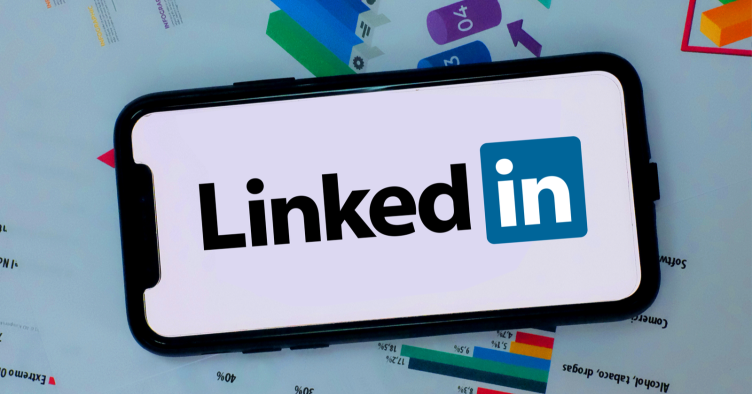In today's digital age, content is king. This is especially true when it comes to LinkedIn.
As a social network dedicated to professional networking, LinkedIn is the perfect platform to showcase your expertise, share valuable insights, and foster connections with fellow professionals in your industry.
Yet, with so much content already out there, merely creating content will not suffice. The challenge lies in creating content that is engaging and has an impact on your target audience. In this article, we will offer valuable insights on crafting content that captivates your audience.
Why is Content King on LinkedIn?
As the go-to platform for professionals, LinkedIn offers a unique opportunity to showcase your expertise and become a thought leader in your industry. There's no better way to do that than by creating compelling and valuable content that resonates with your audience. By consistently publishing high-quality content that educates, informs, and entertains, you can establish yourself as a trusted authority in your field, earning the respect and admiration of your followers. As your reputation grows, so does your ability to attract new clients, partners, and job offers.
But the benefits of creating great content on LinkedIn don't stop there. Thanks to the platform's sophisticated algorithm, content that receives high levels of engagement is rewarded with increased visibility, reaching a wider audience and helping you to grow your following. So if you want to make a lasting impact on LinkedIn and stand out from the crowd, there's no doubt that content is king. With the right strategy and approach, you can use this powerful platform to build your brand, establish your authority, and achieve your professional goals.
Despite the importance of content, a lot of the content out there simply isn’t very good. If you have spent any time on social media, you are probably familiar with this. LinkedIn is awash with mundane, self-promoting posts that add little value to the reader's experience. Moreover, LinkedIn's algorithm is known to penalize posts labeled "engagement bait," further diminishing the visibility of unremarkable content.
The repercussions of publishing low-quality content are significant, as they have the potential to undermine personal branding efforts and restrict one's ability to establish themselves as a thought leader in their industry. Content creators risk damaging their reputation and credibility in their field by failing to engage the audience and provide genuine value. Therefore, it is critical to produce high-quality content that resonates with the intended audience, establishes thought leadership, and provides tangible value to the reader.
How to create effective content on LinkedIn?
To create effective content on LinkedIn, keep in mind the following tips:
- Know your audience: To create content that resonates with your audience, you need to know who they are and what they care about. Take the time to understand your audience's pain points, challenges, and interests, and create content that speaks directly to them.
- Provide value: Your content should offer value to your audience. Whether it's sharing your expertise, providing tips and insights, or sharing industry news, make sure your content is informative and actionable.
- Be authentic: Authenticity is key to building your brand on LinkedIn. Be true to yourself and your values, and don't be afraid to share your personal experiences and insights.
- Use visuals: Visuals are a powerful tool for engaging your audience and making your content stand out. Use high-quality images, infographics, and videos to add interest and depth to your posts.
- Be consistent: To build a strong following on LinkedIn, be consistent with your content. Set a schedule for posting and stick to it, and make sure your content is consistently high quality.
What Content Performs Best on LinkedIn?
1. Personal Stories
Sharing personal stories on LinkedIn is a great way to connect with your audience. Personal stories can be used to illustrate your professional journey, your successes and failures, and your lessons learned. When sharing a personal story, being authentic and honest is important. Your audience will appreciate your transparency and will be more likely to engage with your content.
To create a personal story, identify a significant event or experience that has influenced your professional journey. Write a summary of the story, and then elaborate on the details. Use storytelling techniques to engage your audience and make your story more memorable.
2. Industry Insights
Sharing industry insights is a great way to establish yourself as a thought leader in your field. You can share your perspectives on industry trends, current events, or emerging technologies. Your insights can help your audience stay up-to-date with the latest developments in your industry.
To create industry insights content, research the latest trends and developments in your field. Identify the most interesting and relevant topics, and then write a summary of your thoughts and perspectives. Use statistics, data, and real-life examples to support your arguments.
3. How-to Guides
How-to guides are popular on LinkedIn because they provide actionable advice to help your audience solve problems or improve their skills. How-to guides can cover a wide range of topics, from productivity tips to leadership strategies.
To create a how-to guide, identify a problem or challenge that your audience is facing. Break down the problem into smaller steps, and then provide actionable advice on how to solve it. Use clear and concise language and include images or videos to illustrate your points.
4. Videos
Videos are an effective way to engage your audience on LinkedIn. Videos can be used to share your personal stories, industry insights, or how-to guides. Videos can also be used to promote your brand or showcase your products or services.
To create a video, outline your script and storyboard your visuals. Choose a quiet location with good lighting and audio quality. Use a tripod or stabilizer to keep your camera steady. Keep your video short and engaging, and include a call to action at the end.
5. Infographics
Infographics are a great way to present complex information in a visually appealing way. Infographics can be used to share industry statistics, data, or research findings. They can also promote your brand or highlight your products or services.
To create an infographic, identify the key data or information that you want to present. Choose a simple and visually appealing design and use colors and icons to make your infographic more engaging. Keep your infographic concise and easy to read.
Final Thoughts
In conclusion, LinkedIn provides a powerful platform for professionals to establish their credibility and expertise within their industry by sharing insightful content with their network. Therefore, LinkedIn is an excellent tool to consider if you're looking to build your professional brand and enhance your industry presence.
If you're new to LinkedIn or seeking to elevate your marketing strategies, let the Rutkin Marketing team be your guide. With our expertise and experience, we can assist you in reaching your objectives. Schedule a free 30-minute consultation today to get started on your journey to success.




